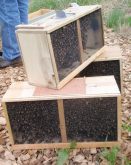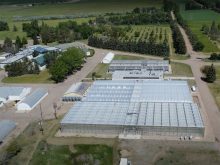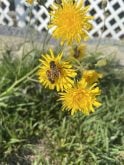What’s Alberta Beekeepers Commission response to Ontario’s move?
Our stance hasn’t changed. We are still very much in favour of working towards a scientific conclusion or solution to what has happened. In Alberta, we just aren’t seeing the same things as they’re seeing out in Ontario.
We were very interested in the Pest Management Regulatory Agency’s report that came out the same day as the news about the neonic ban. The PMRA report showed that bee kill incidents in Ontario were down 70 per cent in 2014. Approximately 72 per cent of all the bee deaths are attributed to three farms.
The Ontario government also says they’d like to see a reduction in overwintering losses, but they don’t outline how they’d like that to happen.

Are there differences between the Alberta and the Ontario beekeeping industries?
The biggest difference between the two is that Alberta is a commercial industry while Ontario is a hobby industry. That’s not saying one is better than the other.
I would like to believe that in Alberta, we’re a little more progressive, a little more in tune with current practices and changes in our industry. We communicate very well with each other.
In Ontario, the industry is spread all over the place and the Ontario Beekeepers Association is very much in a position of power. Some of the commercial beekeepers in Ontario have left the Ontario Beekeepers Association and have formed the Independent Commercial Beekeepers Organization.
Read Also

Canola’s clubroot success story
At one time, scientists, agronomists and growers were extremely worried clubroot would spread across the Prairies and devastate Canada’s canola industry.
Why do Alberta beekeepers feel so strongly about this?
I think everybody’s in agreement that reduced usage of pesticide is a greater good. Better management practices are a benefit. It was the way the government went about this decision. It wasn’t based on science.
(Grain and corn) farmers in Ontario are beyond livid right now. The Ontario beekeepers are not indicative of the Canadian bee industry.
What has Alberta done to reduce bee losses?
Four or five years ago, we were having losses of 40 to 50 per cent. The beekeeping practices we had been using had been used for 10 to 15 years, and they weren’t working as well as before.
We were slow in realizing that. We were losing bees to varroa mites, nosema, and harsh winters. When you combine all these stresses on the bees, it’s really hard for them.
We looked at a number of different strategies to solve our problem. Eventually, Alberta Beekeepers Commission sat down with government, other beekeepers, and the seed companies in southern Alberta, and we developed a hive health program that surveyed the province and educated beekeepers on what they needed to do to monitor disease and pest levels.
Over the four years of that program, we saw a huge difference in our wintering losses and the numbers of hives we had. In 2006, we had 225,000 hives in the province. Now we have around 300,000.
















